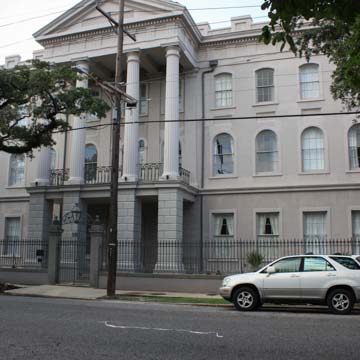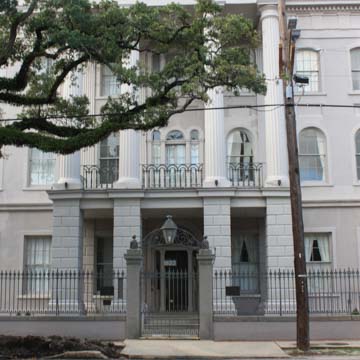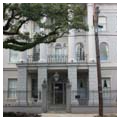St. Anna’s was incorporated in 1853 by Christian women of several denominations as an institution for the “relief of destitute females and their helpless children of all religious denominations.” The asylum is one of many that were built in the nineteenth century to care for the survivors of such deadly diseases as yellow fever and cholera that regularly swept the city. William Newton Mercer, an army surgeon and philanthropist, donated the site and funded the building in memory of his recently deceased daughter Anna. Additional donations came from the entrance fees charged by Garden District resident James Robb to see his famous marble statue, The Greek Slave by Hiram Powers, which is now in the National Gallery of Art in Washington, D.C. The three-story brick building, positioned close to the property line, is fronted by an imposing and institutional-looking pedimented Doric portico raised on stuccoed brick piers scored to resemble stone. Although additions and alterations to the asylum were made between 1959 and 1965 by Freret and Wolf, the original facade has been retained. The building became a home for the elderly, then was renovated in 2015 as rental apartments.
You are here
The Saint Anna (St. Anna’s Orphan Asylum)
1853, Robert Little and Peter Middlemiss, builders; 2015 renovated, Studio WTA. 1823 Prytania St.
If SAH Archipedia has been useful to you, please consider supporting it.
SAH Archipedia tells the story of the United States through its buildings, landscapes, and cities. This freely available resource empowers the public with authoritative knowledge that deepens their understanding and appreciation of the built environment. But the Society of Architectural Historians, which created SAH Archipedia with University of Virginia Press, needs your support to maintain the high-caliber research, writing, photography, cartography, editing, design, and programming that make SAH Archipedia a trusted online resource available to all who value the history of place, heritage tourism, and learning.


















